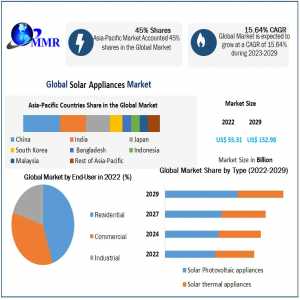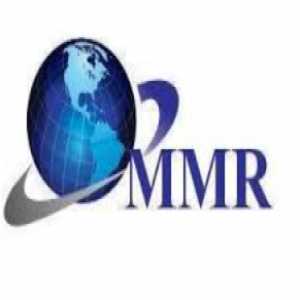
Rail Transportation Market End-Use Applications And Forecast 2025-2032

Global Rail Transportation Market 2025-2032: Trends, Growth, and Investment Opportunities
The Global Rail Transportation Market was valued at USD 282.06 billion in 2024 and is projected to reach nearly USD 401.12 billion by 2032, growing at a CAGR of 4.5% from 2025 to 2032. The growth is fueled by infrastructure investments, modernization of rolling stock, high-speed rail expansion, and sustainability initiatives worldwide.
Overview of Rail Transportation
Rail transportation plays a crucial role in both passenger and freight movement. It is one of the most environmentally friendly modes of land transport, consuming less energy and producing significantly lower CO2 emissions per tonne-kilometer compared to road or air transport. Globally, rail is being positioned as a future-proof, sustainable solution to address traffic congestion, climate change, and urban mobility challenges.
To know the most attractive segments, click here for a free sample of the report:https://www.maximizemarketresearch.com/request-sample/113747/
Market Drivers
- Infrastructure and Rolling Stock Investments:
Governments and private operators are heavily investing in high-speed, high-density, and high-frequency rail networks. For instance:- The European Green Deal allocates €87.5 billion to rail infrastructure.
- The US Infrastructure Investment and Jobs Act (IIJA) provides $66 billion for rail corridor development, track modernization, and safety improvements.
- Africa’s Agenda 2063 prioritizes an integrated high-speed train network as a flagship initiative.
- Sustainability and Environmental Goals:
Rail transportation emits 4–15 times less CO2 than cars or planes, making it critical for countries aiming to reduce carbon footprints. Europe, for example, aims to quadruple freight rail’s modal share by 2030, which could increase freight volumes by 6% annually in ton-kilometers. - Technological Advancements:
Connected solutions, digital train control, and advanced traffic management systems are improving scheduling, safety, and operational efficiency. High-speed rail networks in France, Germany, Italy, Spain, and Japan have already boosted market share by replacing road and air travel on select routes. - Passenger Experience:
Modern operators focus on convenience, speed, frequency, and affordability. Innovations include:- Digital connectivity on board
- Mobility-as-a-Service (MaaS) platforms
- Integrated ticketing for multiple transport modes
- Premium services like luggage assistance, pet transportation, and onboard meal ordering
Market Challenges
- Despite high consumer interest in sustainability, only a small percentage are willing to pay a premium for eco-friendly services.
- Urbanization and increasing passenger expectations require continuous upgrades in infrastructure, rolling stock, and services.
- High initial investment costs can be a barrier for smaller operators.
Segmentation Analysis
By Type:
- Passenger Rail Transport: Largest market share in 2024, with investments focused on modernizing fleets, high-speed services, and customer experience enhancements.
- Rail Freight: Growth driven by the push to shift cargo from road to rail to reduce emissions and traffic congestion.
By Distance:
- Long-Distance: Expected to dominate, with trains offering competitive travel times, especially in regions with high-speed networks.
- Short-Distance: Focused on urban commuting and regional connectivity, often integrating with metro and suburban networks.
Regional Insights
- Europe: Dominates with 45% market share in 2024, driven by extensive rail networks, government support, and technological leadership. European OEMs like Alstom, Bombardier, Hitachi Rail STS, Siemens, and Thales lead global train control and traffic-management innovations.
- North America: Investments focus on corridor upgrades and freight efficiency, with players like Amtrak, CSX, and Union Pacific.
- Asia Pacific: Rapidly expanding with high-speed rail projects in China, Japan, India, and Malaysia.
- Middle East & Africa: Growth fueled by infrastructure development and projects like Africa’s integrated high-speed rail network.
- Latin America: Moderate growth, primarily in freight and urban rail systems.
To know the most attractive segments, click here for a free sample of the report:https://www.maximizemarketresearch.com/request-sample/113747/
Key Players
The rail transportation market is highly competitive, with key players including:
- Amtrak (US)
- CSX Corporation (US)
- Union Pacific Railroad Company (US)
- BNSF Railway (US)
- Canadian National Railway Company (Canada)
- DB Cargo (Germany)
- Deutsche Bahn AG (Germany)
- Thales Group (France)
- PKP Group (Poland)
- Delhi Metro Rail Corporation (India)
- Nippon Express Co. Ltd. (Japan)
- Keretapi Tanah Melayu Berhad (Malaysia)
- Toll Holdings Ltd. (Australia)
- Arkas Logistics (Turkey)
These players are investing in modern infrastructure, high-speed rail, digitalization, and eco-friendly initiatives, positioning themselves for sustainable growth.
Future Outlook
The global rail transportation market is expected to experience robust growth through 2032, driven by:
- Expansion of high-speed passenger rail networks
- Decarbonization initiatives and modal shift from road to rail
- Investment in digital technologies and fleet modernization
- Rising demand for efficient, convenient, and affordable transport solutions
Rail transport is set to remain a cornerstone of sustainable mobility, combining economic efficiency with environmental benefits while meeting the needs of passengers and freight operators alike.
Author Bio
Article Comments
No Comments!
At present there are zero comments on this article.
Why not be the first to make a comment?
Similar Articles
Search Pages
User Upgrade
account to full use of editor,
Including hyperlinks
Article Categories
There are zero sub-categories in this parent category.
There are zero sub-categories in this parent category.

















